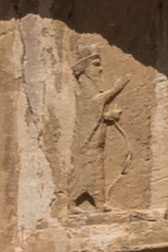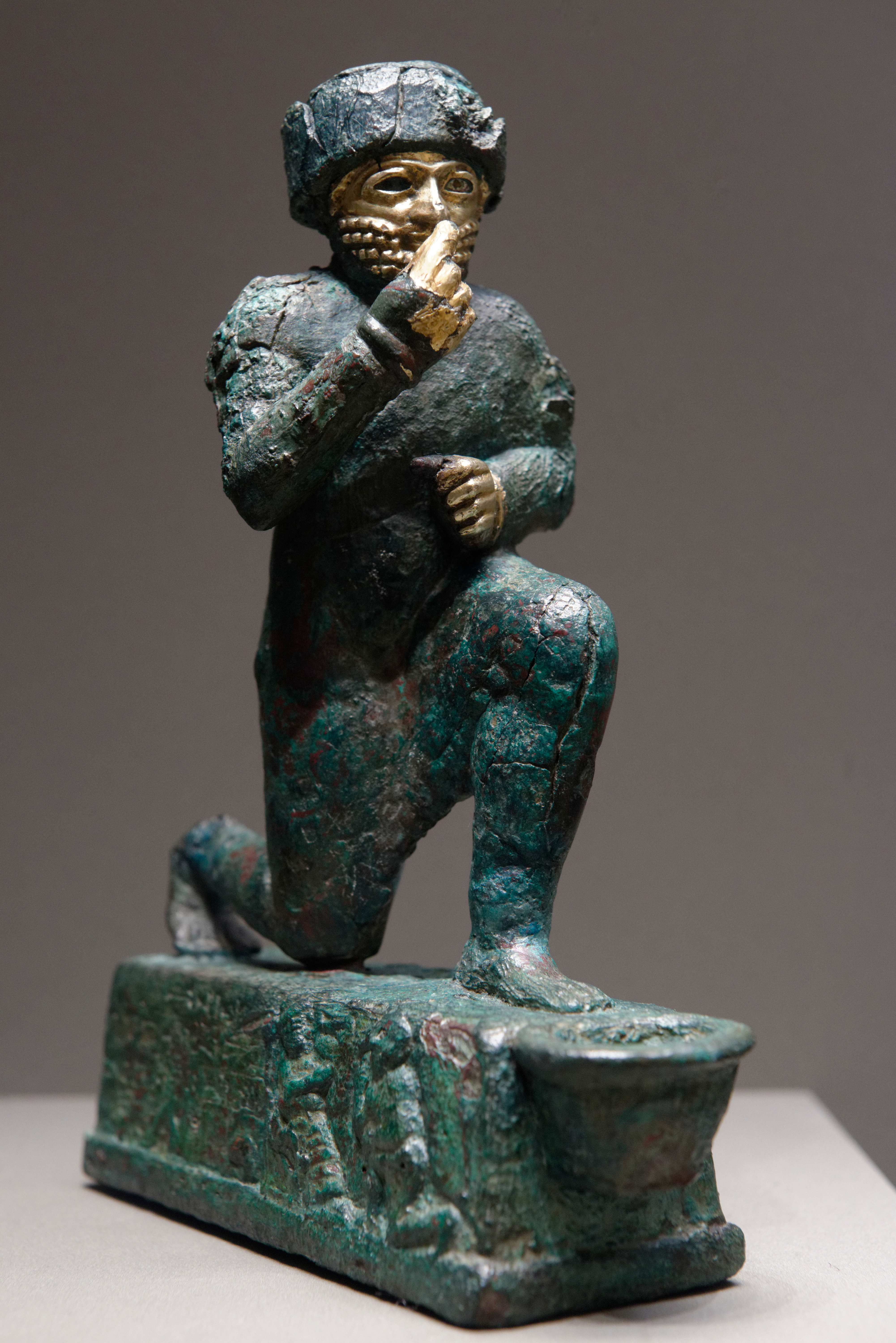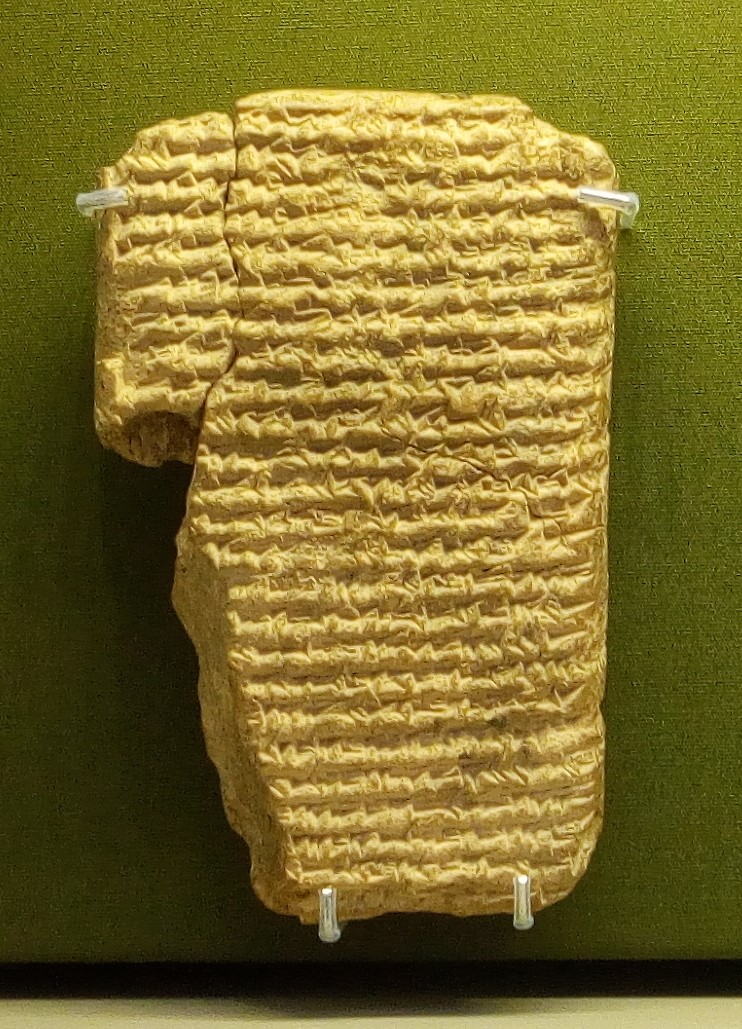|
Samsu-Iluna
Samsu-iluna (Amorite: ''Shamshu-iluna'', "The Sun (is) our god") (–1712 BC) was the seventh king of the founding Amorite dynasty of Babylon. His reign is estimated from 1749 BC to 1712 BC (middle chronology), or from 1686 to 1648 BC (short chronology). He was the son and successor of Hammurabi (r. 1792-1750 BC) by an unknown mother. His reign was marked by the violent uprisings of areas conquered by his father and the abandonment of several important cities (primarily in Circumstances of Samsu-iluna's reign When Hammurabi rose to power in the city of Babylon, he controlled a small region directly around that city, and was surrounded by vastly more powerful opponents on all sides. By the time he died, he had conquered Sumer, Eshnunna, Assyria and Mari making himself master of Mesopotamia. He had also significantly weakened and humiliated Elam and the While defeated, however, these states were not destroyed; if Hammurabi had a plan for welding them to Babylon he did not live l ... [...More Info...] [...Related Items...] OR: [Wikipedia] [Google] [Baidu] |
King Of Babylon
The king of Babylon ( Akkadian: , later also ) was the ruler of the ancient Mesopotamian city of Babylon and its kingdom, Babylonia, which existed as an independent realm from the 19th century BC to its fall in the 6th century BC. For the majority of its existence as an independent kingdom, Babylon ruled most of southern Mesopotamia, composed of the ancient regions of Sumer and Akkad. The city experienced two major periods of ascendancy, when Babylonian kings rose to dominate large parts of the Ancient Near East: the First Babylonian Empire (or Old Babylonian Empire, 1894/1880–1595 BC) and the Second Babylonian Empire (or Neo-Babylonian Empire, 626–539 BC). Babylon was ruled by Hammurabi, who created the Code of Hammurabi. Many of Babylon's kings were of foreign origin. Throughout the city's nearly two-thousand year history, it was ruled by kings of native Babylonian (Akkadian), Amorite, Kassite, Elamite, Aramean, Assyrian, Chaldean, Persian, Greek and Parthian origin. ... [...More Info...] [...Related Items...] OR: [Wikipedia] [Google] [Baidu] |
Larsa
Larsa (, read ''Larsamki''), also referred to as Larancha/Laranchon (Gk. Λαραγχων) by Berossus, Berossos and connected with the biblical Arioch, Ellasar, was an important city-state of ancient Sumer, the center of the Cult (religious practice), cult of the sun god Utu with his temple E-babbar. It lies some southeast of Uruk in Iraq's Dhi Qar Governorate, near the east bank of the Shatt-en-Nil canal at the site of the modern settlement Tell as-Senkereh or Sankarah. Larsa is thought to be the source of a number of tablets involving Babylonian mathematics, including the Plimpton 322 tablet that contains patterns of Pythagorean triples. History Larsa is found (as UD.UNUG) on Proto-cuneiform lexical lists from the Uruk 4 period (late 4th millennium BC). A few Proto-cuneiform tablets were also found there. Three Neolithic clay tokens, from a slightly early period, were also found at Larsa. For most of its history Larsa was primarily a cult site for the god Utu. In the early p ... [...More Info...] [...Related Items...] OR: [Wikipedia] [Google] [Baidu] |
List Of Kings Of Babylon
The king of Babylon (Akkadian language, Akkadian: , later also ) was the ruler of the ancient Mesopotamian city of Babylon and its kingdom, Babylonia, which existed as an independent realm from the 19th century BC to its fall in the 6th century BC. For the majority of its existence as an independent kingdom, Babylon ruled most of southern Mesopotamia, composed of the ancient regions of Sumer and Akkad (region), Akkad. The city experienced two major periods of ascendancy, when Babylonian kings rose to dominate large parts of the Ancient Near East: the First Babylonian Empire (or Old Babylonian Empire, 1894/1880–1595 BC) and the Second Babylonian Empire (or Neo-Babylonian Empire, 626–539 BC). Babylon was ruled by Hammurabi, who created the Code of Hammurabi. Many of Babylon's kings were of foreign origin. Throughout the city's nearly two-thousand year history, it was ruled by kings of native Babylonian (Akkadian), Amorites, Amorite, Kassites, Kassite, Elamite, Arameans, Aramean, ... [...More Info...] [...Related Items...] OR: [Wikipedia] [Google] [Baidu] |
Isin
Isin (, modern Arabic language, Arabic: Ishan al-Bahriyat) is an archaeological site in Al-Qādisiyyah Governorate, Iraq which was the location of the Ancient Near East city of Isin, occupied from the late 4th millennium Uruk period up until at least the late 1st millennium BC Neo-Babylonian period. It lies about southeast of the modern city of Al Diwaniyah. The tutelary deity of Isin, dating back to at least the Early Dynastic Period (Mesopotamia), Early Dynastic period, was the healing goddess Gula (goddess), Gula with a major temple (, E-gal-ma) sited there as well as smaller installations for the related gods of Ninisina and Ninlil, Sud. Archaeology Isin is located approximately south of the ancient city of Nippur. The site covers an area of about 150 hectares with a maximum height of about 10 meters. By 1922 the site had been suggested as that of Isin. Ishan al-Bahriyat was visited by Stephen Herbert Langdon for a day to conduct a sounding, while he was excavating at K ... [...More Info...] [...Related Items...] OR: [Wikipedia] [Google] [Baidu] |
Middle Chronology
The chronology of the ancient Near East is a framework of dates for various events, rulers and dynasties. Historical inscriptions and texts customarily record events in terms of a succession of officials or rulers: "in the year X of king Y". Comparing many records pieces together a relative chronology relating dates in cities over a wide area. For the 3rd and 2nd millennia BC, this correlation is less certain but the following periods can be distinguished: * Early Bronze Age: Following the rise of cuneiform writing in the preceding Uruk period and Jemdet Nasr periods came a series of rulers and dynasties whose existence is based mostly on scant contemporary sources (e.g. En-me-barage-si), combined with archaeological cultures, some of which are considered problematic (e.g. Early Dynastic II). The lack of dendrochronology, astronomical correlations, and sparsity of modern, well-stratified sequences of radiocarbon dates from Southern Mesopotamia makes it difficult to assign a ... [...More Info...] [...Related Items...] OR: [Wikipedia] [Google] [Baidu] |
Puzur-Sin
Puzur-Sin was an Assyrian king in the 18th century BC, during the Old Assyrian period. Reign One of the few known Assyrian rulers to be left out of the ''Assyrian King List'', Puzur-Sin was responsible for ending the rule of the dynasty of Shamshi-Adad I, whom he considered to be foreign usurpers. He overthrew Asinum. References Ancient Assyrians 18th-century BC Assyrian kings {{Assyrian-stub ... [...More Info...] [...Related Items...] OR: [Wikipedia] [Google] [Baidu] |
Ashurbanipal
Ashurbanipal (, meaning " Ashur is the creator of the heir")—or Osnappar ()—was the king of the Neo-Assyrian Empire from 669 BC to his death in 631. He is generally remembered as the last great king of Assyria. Ashurbanipal inherited the throne as the favored heir of his father Esarhaddon; his 38-year reign was among the longest of any Assyrian king. Though sometimes regarded as the apogee of ancient Assyria, his reign also marked the last time Assyrian armies waged war throughout the ancient Near East and the beginning of the end of Assyrian dominion over the region. Esarhaddon selected Ashurbanipal as heir 673. The selection of Ashurbanipal bypassed the elder son Shamash-shum-ukin. Perhaps in order to avoid future rivalry, Esarhaddon designated Shamash-shum-ukin as the heir to Babylonia. The two brothers jointly acceded to their respective thrones after Esarhaddon's death in 669, though Shamash-shum-ukin was relegated to being Ashurbanipal's closely monitored vassal. Mu ... [...More Info...] [...Related Items...] OR: [Wikipedia] [Google] [Baidu] |
Inanna
Inanna is the List of Mesopotamian deities, ancient Mesopotamian goddess of war, love, and fertility. She is also associated with political power, divine law, sensuality, and procreation. Originally worshipped in Sumer, she was known by the Akkadian Empire, Akkadians, Babylonian religion, Babylonians, and Assyrians as Ishtar. Her primary title is Queen of Heaven (antiquity), "the Queen of Heaven". She was the patron goddess of the Eanna temple at the city of Uruk, her early main religious center. In archaic Uruk, she was worshipped in three forms: morning Inanna (Inana-UD/hud), evening Inanna (Inanna sig), and princely Inanna (Inanna NUN), the former two reflecting the phases of her associated planet Venus. Her most prominent symbols include the Lion of Babylon, lion and the Star of Ishtar, eight-pointed star. Her husband is the god Dumuzid (later known as Tammuz), and her (attendant) is the goddess Ninshubur, later conflated with the male deities Ilabrat and Papsukkal. Inanna ... [...More Info...] [...Related Items...] OR: [Wikipedia] [Google] [Baidu] |
Nippur
Nippur (Sumerian language, Sumerian: ''Nibru'', often logogram, logographically recorded as , EN.LÍLKI, "Enlil City;"I. E. S. Edwards, C. J. Gadd, N. G. L. Hammond, ''The Cambridge Ancient History: Prolegomena & Prehistory'': Vol. 1, Part 1, Cambridge University Press, 1970 Akkadian language, Akkadian: ''Nibbur'') was an ancient Sumerian city. It was the special seat of the worship of the Sumerian god Enlil, the "Lord Wind", ruler of the Ancient Near Eastern cosmology , cosmos, subject to Anu, An alone. Nippur was located in modern Nuffar 5 miles north of modern Afak, Al-Qādisiyyah Governorate, Iraq. It is roughly 200 kilometers south of modern Baghdad and about 100 km southeast of the ancient city of Babylon. Occupation at the site extended back to the Ubaid period (Ubaid 2 – Hajji Muhammed), the Uruk period, and the Jemdet Nasr period. The origin of the ancient name is unknown but different proposals have been made. History Nippur never enjoyed political hegemony in its ... [...More Info...] [...Related Items...] OR: [Wikipedia] [Google] [Baidu] |
Ilum-ma-ili
The First Sealand dynasty (URU.KÙKIWhere ŠEŠ-ḪA of King List A and ŠEŠ-KÙ-KI of King List B are read as URU.KÙ.KI), or the 2nd Dynasty of Babylon (although it was independent of Amorite-ruled Babylon), very speculatively c. 1732–1460 BC (short chronology), is an enigmatic series of kings attested to primarily in laconic references in the ''King Lists A'' and ''B'', and as contemporaries recorded on the Assyrian ''Synchronistic king list A.117''. Initially it was named the "Dynasty of the Country of the Sea" with Sealand later becoming customary. The dynasty, which had broken free of the short lived, and by this time crumbling Old Babylonian Empire, was named for the province in the far south of Mesopotamia, a swampy region bereft of large settlements which gradually expanded southwards with the silting up of the mouths of the Tigris and Euphrates rivers (the region known as ''mat Kaldi'' " Chaldaea" in the Iron Age). Sealand pottery has been found at Girsu, Uruk, and La ... [...More Info...] [...Related Items...] OR: [Wikipedia] [Google] [Baidu] |






